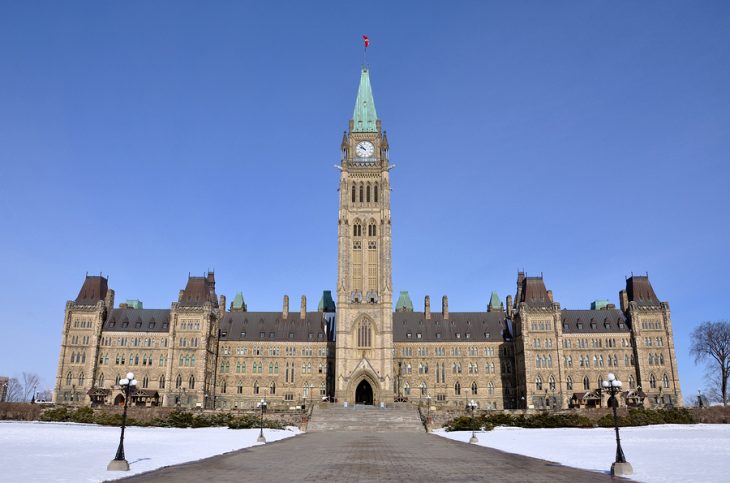
OTTAWA – While official spectrum license transfer applications were filed by Rogers Communications and Shaw Communications in early September, sources tell Cartt.ca senior officials at Industry Canada have let Rogers executives know they’re unlikely to be granted control of Shaw Communications’ unused AWS wireless spectrum.
In January of 2013, as part of a larger deal, Rogers bought an option from the Calgary-based company to acquire its AWS spectrum in Alberta, British Columbia, Manitoba and Northern Ontario to be exercised when the moratorium on its sale expires. It ended September 1st and the two companies applied to Industry Canada for approval of the transfer shortly thereafter.
Unlike with the CRTC, the content of such applications are not normally made public and there is no set time frame for an announcement of any decision. It could take days. It could take months.
Shaw bought AWS wireless spectrum during the 2008 auction in the hopes of launching a regional cellular division, but gave up on that effort due to the costs. However, since the spectrum it purchased was set aside for wireless newcomers, it came with the condition that none of the incumbents could buy it for five years. That five years is now over, but industry watchers are well aware the federal government does not want to see that set aside spectrum fall into incumbent hands.
Despite that, both Rogers and Shaw officials have been busy on Parliament Hill meeting with various Industry officials this fall.
Two sources with direct knowledge of the meetings but who did not have authority to speak publicly, said senior officials at Industry Canada told senior Rogers executives while they can’t give an outright “no” in advance of an official ministry decision, the bid by Rogers to acquire the Shaw spectrum stands little chance of approval.
Looking at the Canadian Lobbyist Registry, it shows Rogers CEO Guy Laurence met with Industry Minister James Moore, Moore’s chief of staff James Maunder and the minister’s director of policy, James Nicholson on October 2nd. In the registry noting the meeting, AWS was mentioned as a topic of discussion. Our sources say it was at this meeting (the existence of which was posted to the registry’s web site on November 15th) where the federal government’s position was made clear to Laurence. Under “subject matter details” the meeting notice said among many things discussed that the “policy framework with regard to the terms and conditions of auction for spectrum licences for advanced wireless services and other spectrum in the 2GHz range” was talked about.
“They’ve been given a ‘soft no’,” a source with knowledge of the meeting who asked to remain anonymous told Cartt.ca.
The Lobbyist registry also shows two meetings in October between Shaw executives and Industry officials, including one with IC senior assistant deputy minister Kelly Gillis on October 2nd.
When contacted by Cartt.ca, Minister Moore’s spokesperson Jake Enwright would not comment on what was said during the meeting with Laurence. “The minister routinely meets with stakeholders in the telecommunications sector and has a very good relationship with them,” he told Cartt.ca “In terms of any kind of proposal for the transfer of spectrum, we’ve been quite clear on our policy in that we will not approve a spectrum transfer request that will diminish competition in the wireless sector.”
(Ed note: We fancy ourselves wordsmiths here and the quote from Enwright could be read as keeping the door open at least a crack for Rogers. Since Shaw isn’t actually using the spectrum and has no plans to deploy cellular service in order to compete in the sector with the other cellcos, a case could be made that transferring the spectrum to Rogers would not diminish competition in the wireless sector in the same way as allowing Telus to buy Mobilicity would have, for example.)
The federal government has said repeatedly, however, it does not want to see the AWS spectrum which was set aside for new entrants in the 2008 auction go to any of the incumbents, despite the fact the original license only prohibits such a sale for five years – and it has held a hard line. Despite pleas from bankrupt Mobilicity and its backers, Industry Canada twice turned down good offers for its assets from incumbent Telus.
The option to purchase the Shaw spectrum (worth about $250 million) was a deal completed well in advance of Laurence’s arrival as Rogers CEO late last year. It was part of a bigger, $700 million cable and broadcast deal announced in January 2013. $50 million has been paid to Shaw already and is non-refundable – with the remainder going to Shaw only if the deal is approved. The option expires at the end of March, according to a source with knowledge of the option agreement.
“We’re hopeful that they recognize the importance of the spectrum,” said Rogers spokesperson Patricia Trott to Cartt.ca. “We want it to be used for Canadians. This is unused spectrum, we know there’s increasing demand from consumers – they want faster services and more capacity and they’re increasingly consuming video, so more spectrum is important.”
“We know we can deploy it quickly and we hope that they will approve it.”
If the transfer is denied, license holder Shaw will have to take it to the market again when the option expires.



